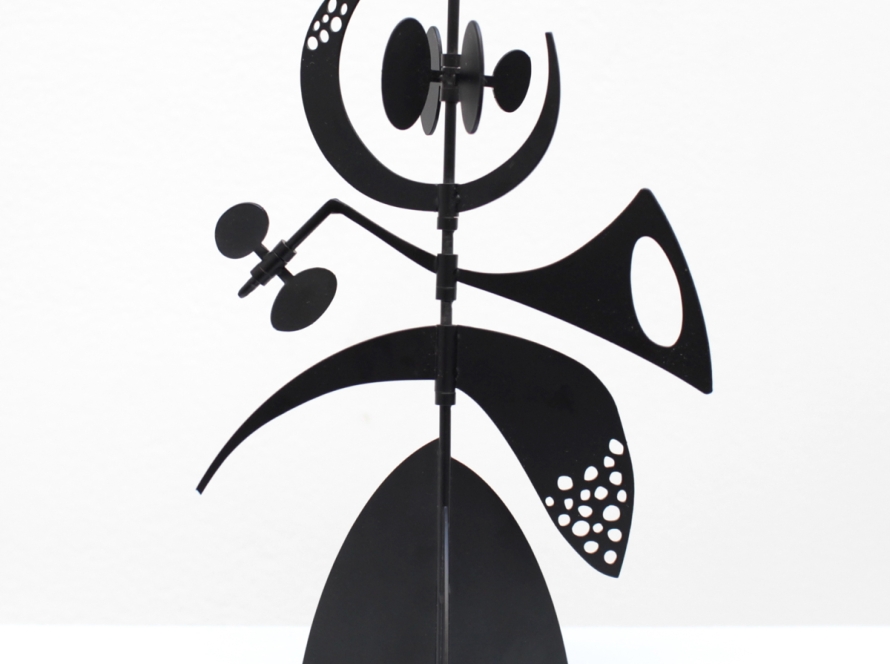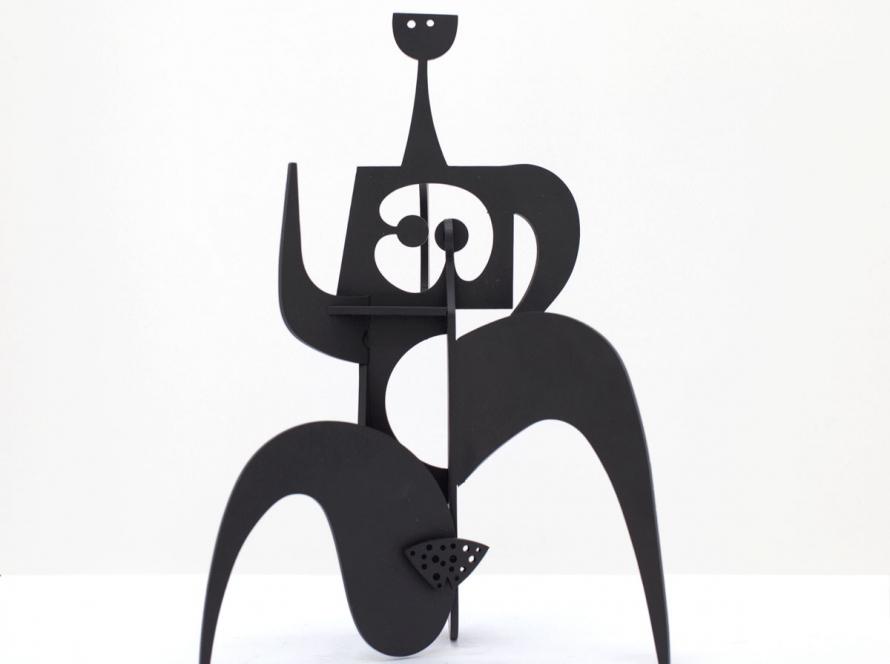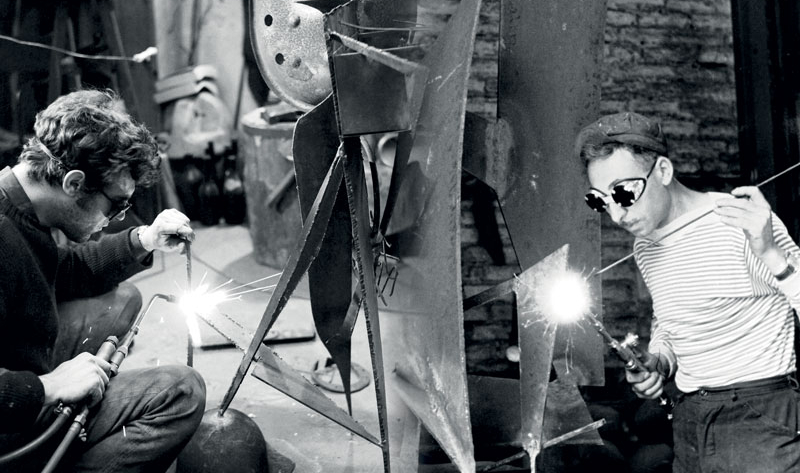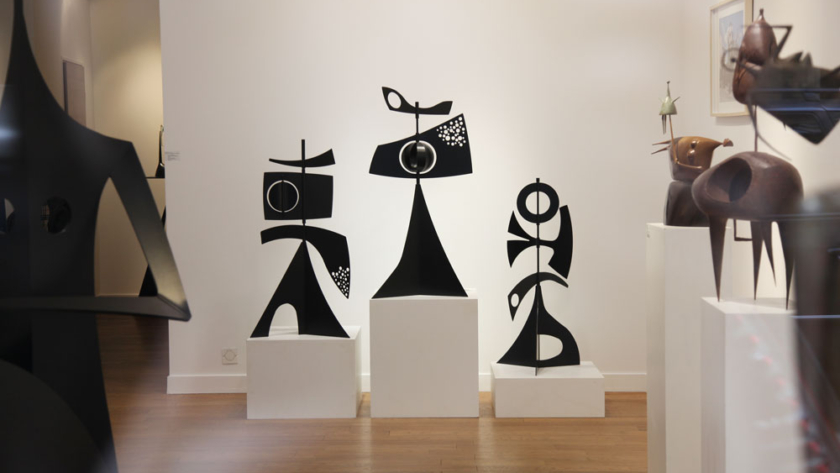
To introduce movement is to create life
Philippe Hiquily
Born in Paris on March 27, 1925, he enlisted for Indochina in the Leclerc Division from 1945 to 1947 before returning to Paris and entering the École Nationale Supérieure des Beaux-Arts. He attended the Jimond-Janniot studio where he worked alongside, among others, César, Michel Guino and Albert Féraud. Hiquily left the Fine Arts in 1953 after obtaining the prestigious Sculpture Prize for his work Neptune.

He bought a workshop in Montparnasse in which he worked relentlessly on the elaboration of sculptures using a new technique: “Direct Metal”, inspired by the works of Julio Gonzàlez and the Greek archaics, who consists of pushing back the sheet and welding it. He then met the artist Germaine Richier, immediately seduced by his work, took him under her wing and ordered a series of “sellettes” for her works. In 1955 he presented his first exhibition at the Galerie de Palmes (Paris) and the Museum of Modern Art in Paris bought his work “La Bicyclette”.
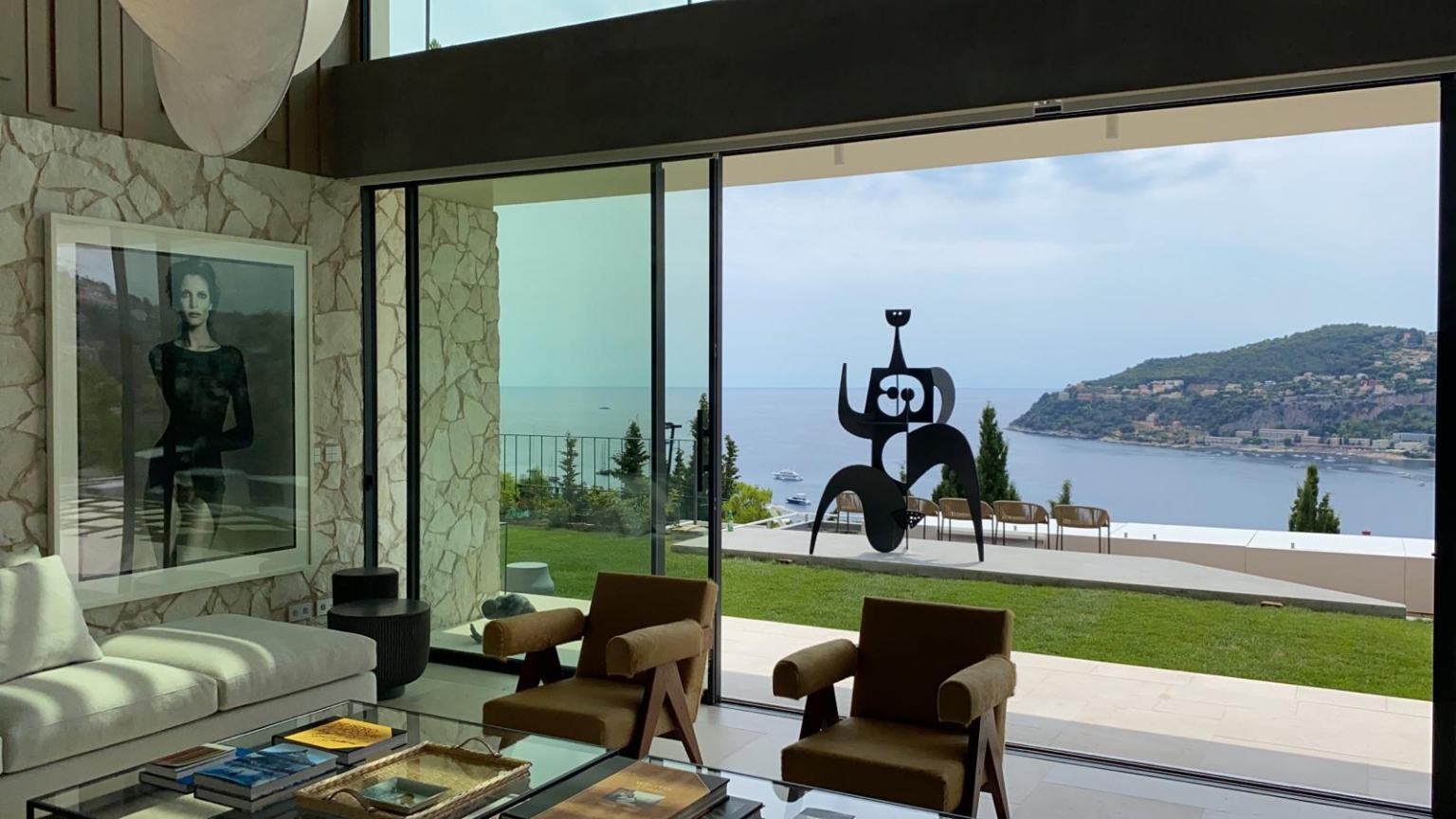
In 1957 he participated in the Salon de Mai and met the critic Alain Jouffroy. Two years later, his exhibition at The Contemporaries Gallery in New York marked the beginning of his success across the Atlantic. All works are sold out at the same evening during the opening, including one at the Guggenheim Museum. In France, he won the Critics’ Prize for his sculpture Jérémie at the Paris Biennale. At the beginning of the 1960s he also launched into metal furniture after making a small piece of furniture at the request of the Vicomtesse de Noailles which had aroused great interest by the decorator Henri Samuel. He ordered several pieces from the artist for his wealthy clients and for himself and Hiquily became the sculptor – official designer of the most illustrious families of the French nobility such as the Van Zuylen, the Rothschilds, or Louise de Vilmorin. It was during this period that he gradually abandoned rusty sheet metal in favor of brass, a more noble material and in keeping with the rich Parisian interiors of his clients. The exhibition at the Odermatt Gallery, Accouplements, also marks the artist’s taste for mixing materials and objects, with all the humor and sensuality that characterize his work.
In the 1980s, it was the question of movement that came to the fore in his works. In 1985 Hiquily was named Chevalier de l’Ordre National des Arts et Lettres by the Minister of Culture and Officer of the National Order of Arts and Letters in 2011 after the inauguration of the exhibition “Hiquily” at the Hotel Lutetia, Paris.

In the 1990s he also created around sixty models for the edition of bronze sculptures with the Patrice Trigano Gallery.
In 2010, three 12-meter weathervanes were ordered by the city of Shanghai and installed in Jing’An Park for the World Expo. Two years later, the Catalog Raisonné of Philippe Hiquily (1948-2011) published by the LOFT Gallery was accompanied by numerous events, in particular an exhibition at the town hall of the 6th arrondissement of Paris and the exhibition of monumental sculptures on places Saint-Sulpice and Saint Germain-des-près.
Portrait • Philippe Hiquily
Discover in the video the artist Philippe Hiquily.



